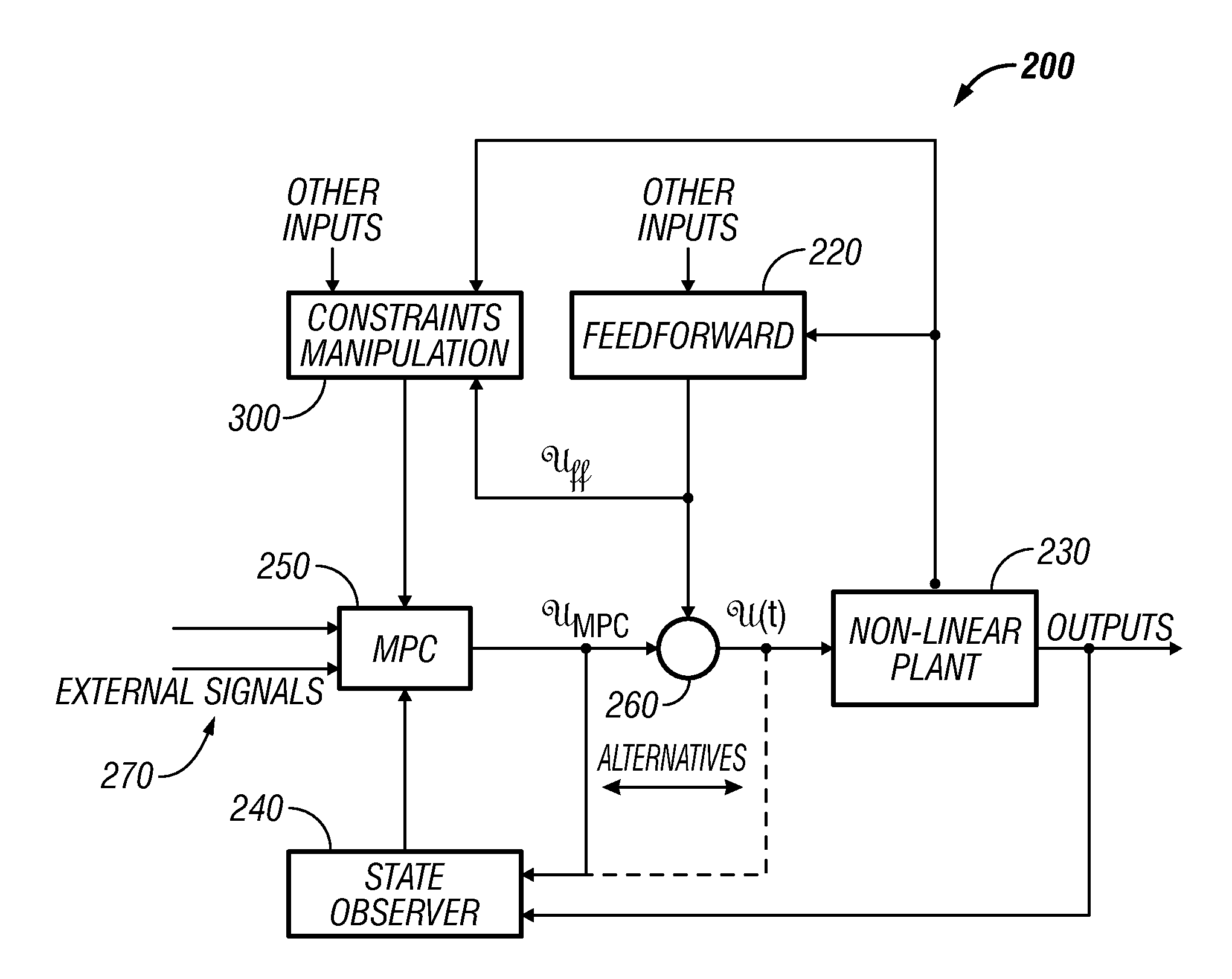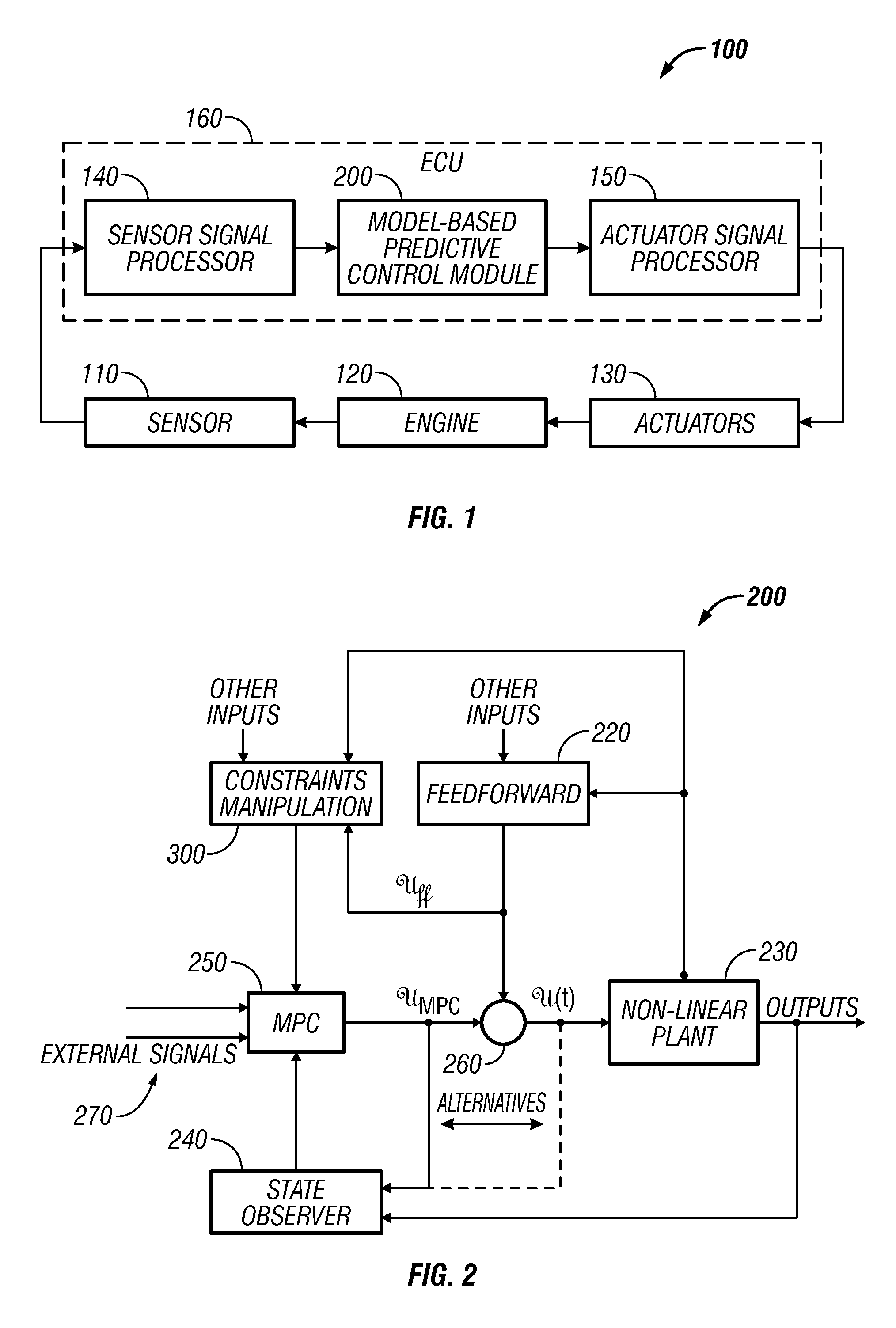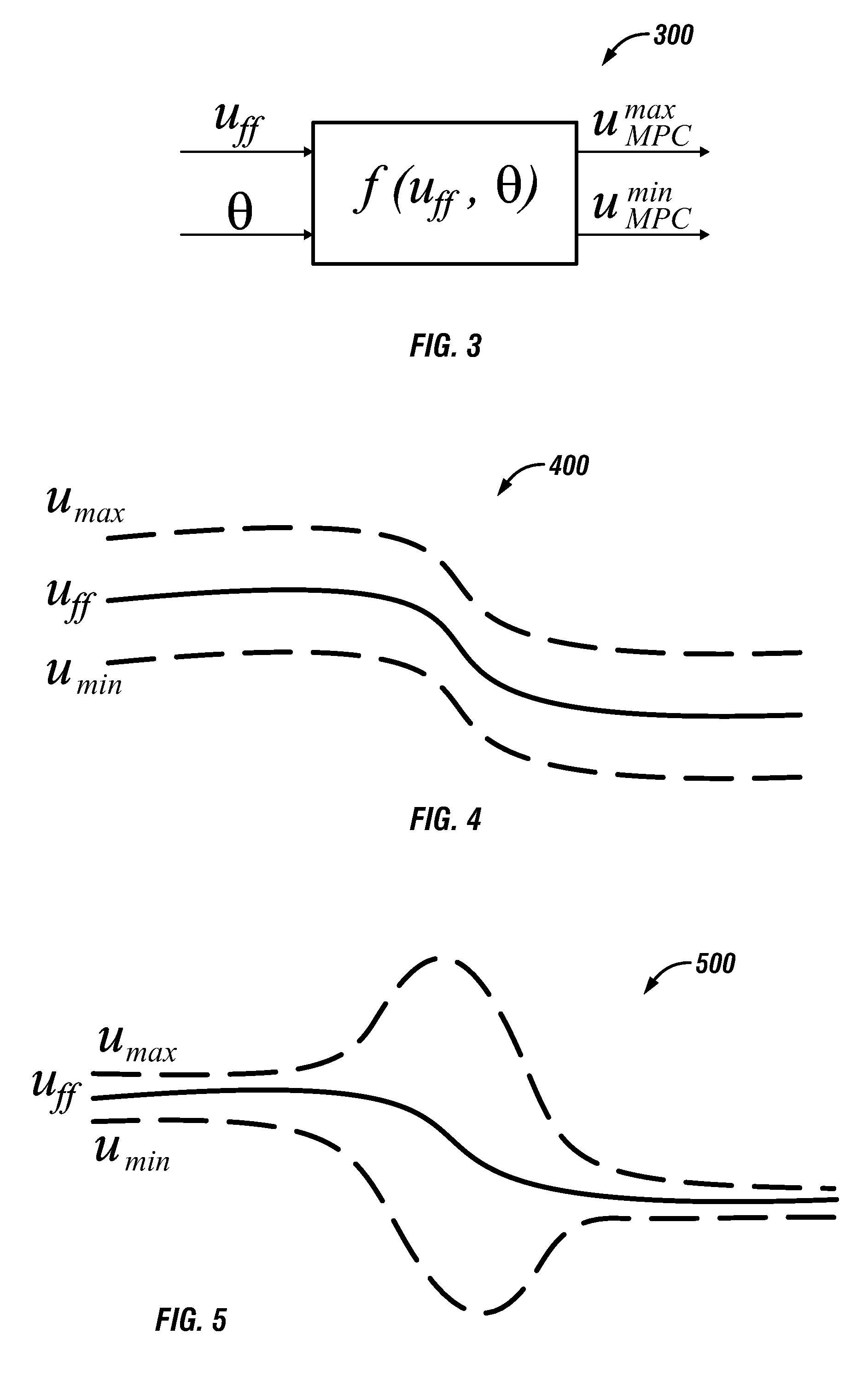Method and system for combining feedback and feedforward in model predictive control
a model predictive control and feedforward technology, applied in adaptive control, process and machine control, instruments, etc., can solve the problems of reducing the accuracy of model prediction, so as to improve the accuracy and reliability of feedforward control signal, the effect of minimizing the uncertainty
- Summary
- Abstract
- Description
- Claims
- Application Information
AI Technical Summary
Benefits of technology
Problems solved by technology
Method used
Image
Examples
Embodiment Construction
[0036]The particular values and configurations discussed in these non-limiting examples can be varied and are cited merely to illustrate at least one embodiment and are not intended to limit the scope thereof.
[0037]FIG. 1 illustrates a schematic block diagram of a general control system 100 associated with an optimal MPC control module 200 utilizing a feedback and a feedforward control in which embodiments of the present invention may be implemented. The control system 100 can be adapted for use with MPC control module 200 for controlling, for example, an automotive system. MPC control module 200 can include, for example, a model of the dynamic operation process of an automotive system. The control system 100 can also be configured to include an ECU (Electronic Control Unit) 160 connected to an engine 120. The ECU 160 may include a digital computer that controls the engine 120 (and sometimes transmission, brake or other car system) operations based on data received from various sens...
PUM
 Login to View More
Login to View More Abstract
Description
Claims
Application Information
 Login to View More
Login to View More - R&D
- Intellectual Property
- Life Sciences
- Materials
- Tech Scout
- Unparalleled Data Quality
- Higher Quality Content
- 60% Fewer Hallucinations
Browse by: Latest US Patents, China's latest patents, Technical Efficacy Thesaurus, Application Domain, Technology Topic, Popular Technical Reports.
© 2025 PatSnap. All rights reserved.Legal|Privacy policy|Modern Slavery Act Transparency Statement|Sitemap|About US| Contact US: help@patsnap.com



